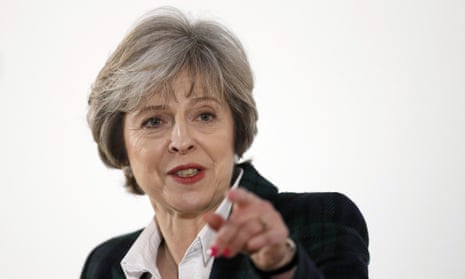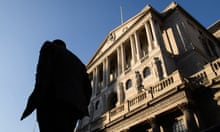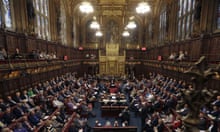The speech was so closely guarded that the final draft was delivered to key ministers by hand, the night before, in a brown envelope.
The next day, amid the marble and gilt of Lancaster House in London’s St James’s, the prime minister set out her government’s blueprint for Brexit to an audience of ambassadors.
Inside Downing Street, there was a sense of achievement and relief as it became clear that a long and carefully calibrated address had largely hit the mark. Most agreed that Theresa May had achieved quite a feat – giving hardline Brexiteers their clean break from the single market but dangling enough hope of close economic ties to soften the blow for ardent remainers.
For many, the speech was seen through the prism of a Conservative power play in which May had been pulled in opposing directions by prominent cabinet Brexiters and a more cautious chancellor.
But perhaps the most significant players in her Brexit negotiations are part of a more close-knit group, which doesn’t include politicians.
May’s Brexit inner circle is, arguably, made up of a handful of senior officials and special advisers who she gathers together every week in Downing street to discuss the latest twists and turns in Britain’s EU departure.
Unlike some previous prime ministers who would oversee sprawling meetings, May limits this key “operational” discussion to a group of just 10 of her most trusted advisers who help her weigh and balance the evidence before making decisions.
Among them are three imports from the Home Office: the prime minister’s joint chiefs of staff Nick Timothy and Fiona Hill, as well as Peter Storr, now a No 10 adviser on the EU.

Others include the cabinet secretary, Sir Jeremy Heywood, the most senior official in the Brexit department, Oliver Robbins, the new ambassador to the EU, Sir Tim Barrow, and respected Tory advisers Chris Wilkins and Denzil Davidson.
Mark Sedwill, the permanent secretary in the Home Office, does not yet attend the weekly session but is tipped to move into the centre of government and is another critical ally for the prime minister.
Some suggest there has been a Downing street takeover by May’s old department. They say that a home secretary-turned-prime minister – surrounded by trusted advisers from her former role – will always place security and immigration above the demands of business and finance.
Those close to Downing Street rebut the claim, with one source emphasising that Heywood is an influential figure who is vocal about the need for close economic ties.
While May’s speech was widely seen as a roadmap for hard Brexit, talk of crashing out of the EU and on to WTO rules (as favoured by some Brexiters) is limited within the inner circle, the Guardian understands. The prime minister does not consider this a likely outcome.
Nor does she have her eyes on another suggestion from prominent out campaigners – that Britain should try to adopt the Canada-EU trade deal as a template for Britain’s future agreement. Sources say she believes that much closer links are possible because of the common standards that already exist.
Still, security and immigration are clearly priorities for her government. Questions over whether that comes from the number of Home Office imports are aired in a paper to be published on Monday by Charles Grant, director of the Centre of European Reform.
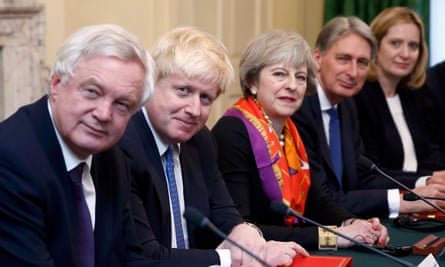
While praising some of the individuals working closely with May, he argues there is a lack of specific expertise on the EU, diplomacy, economics, financial market or business.
And Grant cites other risks of such centralised decision making.
“People in the inner circle may become overstretched so that important decisions are delayed, and centralisation may discourage the tapping of outside expertise,” he writes.
But he also outlines the positives of focusing on a “small circle of trusted allies”, including fewer leaks and the ability to act fast “with minimal foot-dragging from other Whitehall departments”.
May was determined that her style of premiership would mark a break from Cameron’s so-called sofa-government, in which chumocracy ruled.
And yet critics would argue that May’s reliance on a close group of, admittedly, official advisers has some similar traits.
When Boris Johnson received his copy of the Lancaster House speech, he was delighted. As he had hoped – and as he and fellow Brexiters had urged after seeing earlier versions – the prime minister ruled out remaining in the single market or aiming for full membership of the customs union.
The foreign secretary felt his worldview had triumphed over the more cautious approach of Hammond, who had warned publicly about the risks of leaving the customs union. “He lost the battle there,” one source said of the chancellor.
But if Hammond was upset, he certainly did not show it. In fact, those close to the prime minister claim the speech marked the start of an improvement in relations between No 10 and No 11.
So how did May manage to keep her troops relatively in line?
Perhaps she convinced colleagues with a series of cabinet “bilaterals” in the run-up to the speech, designed to make ministers feel they were a central part of the process.
Or maybe they knew there was little point in fighting. At least one senior figure told friends that it felt whatever advice was offered to the prime minister, “she just does what she wants anyway”.
Others joked that they were being kept in check by Downing Street’s director of communications, Katie Perrior, who was cheekily described by one minister as “Sidcup’s answer to Malcolm Tucker” (although others say that while Perrior can be tough, she is hardly partial to a sweary rant).
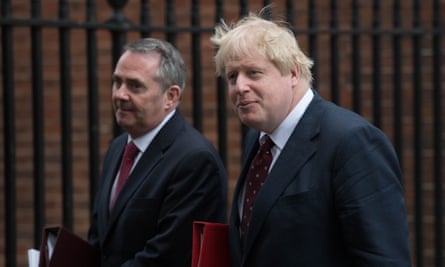
In reality, May’s speech simply fired the starting gun for Brexit; campaigners might be calm for now, but they know the fight is on.
There are some (apparently including Liam Fox, described by ministers as the “Presbyterian wing” of the Brexiters) who are bent on the hardest of Brexits, ie the WTO route. Others will fight for a trade agreement with limited immigration controls to allow close economic links to the EU to be maintained.
In cabinet, Hammond and other allies – Greg Clark, Damian Green and Amber Rudd – will be playing a long game but will make the argument for close ties.
Elsewhere the divides will be more obvious.
One key leaver – the MEP David Campbell Bannerman – recently argued Britain should seek something similar to the Ceta agreement. But his Tory colleague Vicky Ford, who chairs the European parliament’s committee on the single market and who campaigned for remain, called for a more ambitious approach.
“It is important to realise there isn’t a single free trade agreement between the EU and another country that is anything like the level of access to each other’s markets that we have got used to,” she told the Guardian.
Others will be arguing from the Conservative backbenches, where some cling to the idea that the article 50 process is revocable. They are ready to mount a noisy public campaign if they believe May has struck a bad deal.
One Conservative MP said: “If it’s revocable, then we have to to do what the hard Brexiteers have been doing for decades, in 18 months”.
And as MPs who once considered themselves moderate turn into potential rebels, so the awkward squad of Brexiters are changing too.
The European Research Group, formed by Steve Baker MP, began with the most ardent campaigners demanding a hard Brexit but has since sought to bring remainers into the fore, including the MP John Penrose.
“Since the referendum the ERG has transformed itself from a Brexiteer rebellion into a mainstream, inclusive group for any Conservative MP who wants to make Brexit work as well as possible,” Baker said.
Perhaps this is the group to watch most closely because it is closely aligned with May’s thinking. By the time she waves the finish flag over the Brexit race, after an incredibly complex negotiation that cannot possibly keep everyone happy, it is this bulk of Tory backbenchers she will be most eager to please.
